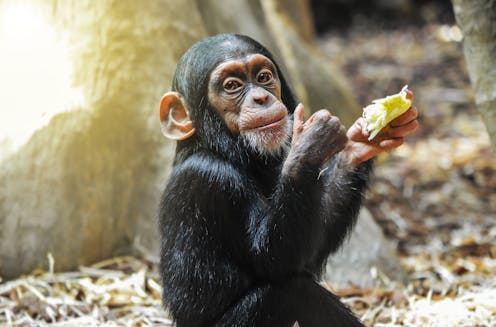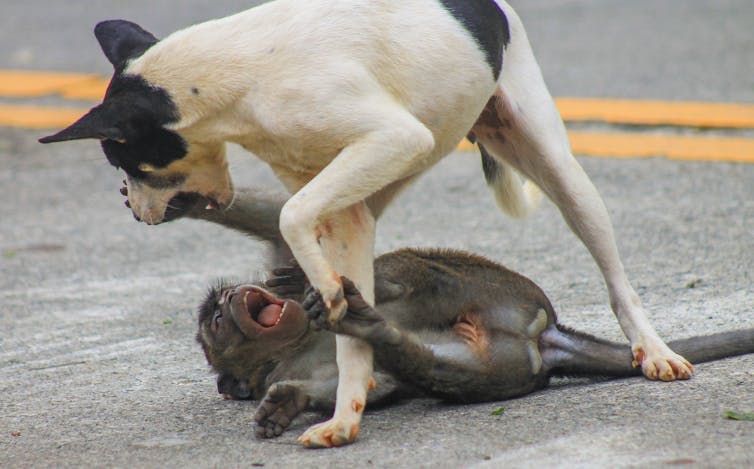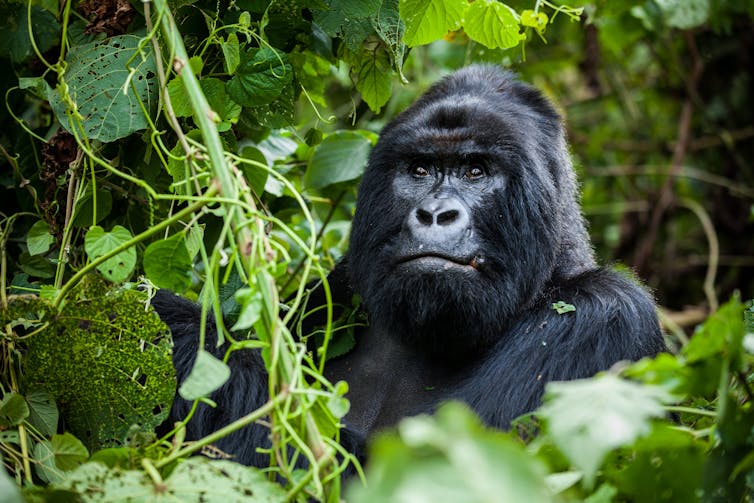
Monkeys, apes and lemurs are cute, familiar and lovable. But an estimated 60% of all primate species are listed as vulnerable, threatened or endangered, according to the International Union for Conservation of Nature, a network of environmental organisations.
You’ve probably heard about the main problems, like deforestation and the loss of habitat. But primates are a diverse group of animals with a wide geographical range, so there are many more subtle ways our actions as humans put these wonderful animals at risk.
1. Dogs
Everywhere we go, our best friends are likely to go with us. Our review shows that dogs are present in many primate habitats. These predators sometimes kill and injure primates, but they also may simply chase and harass them, disrupting their socialising or foraging.
Being on the lookout for harassing dogs is stressful and causes primates to use more energy. Reducing these potentially lethal encounters depends on conservationists communicating with dog owners, who often don’t recognise the danger their dogs pose to such wildlife.

When diseases jump between animal species, they can cause serious harm to a species that does not have the necessary resistance. Dog diseases such as canine heartworm and parvovirus can be passed from dogs to primates, and could potentially be fatal. There’s also the possibility that pathogens – viruses, bacteria or parasites – could evolve to spread more easily or become more deadly.
2. Depictions
If you live outside a country where primates live, you may never see a live primate outside of a zoo. Nevertheless, your media choices can still affect their conservation.
Researchers have discovered that our choices of what we watch on YouTube, Instagram or TikTok can end up fuelling the use of primates as pets or in entertainment. Primates are cute, and we love to watch videos of them. However, many of these pictures and videos show them in artificial contexts, such as primates wearing clothes or interacting with office equipment.
When people view such content, they often say they want a primate as a pet and are less likely to believe that these animals are endangered.
We can help to protect primates by not viewing or sharing videos that show animals in unnatural situations. The responsibility for interacting with primates respectfully is even higher for those who live near primates or those who embark on wildlife tourism.
People’s activities can affect where primates live, what food they eat, and how they live their lives. Many tourist destinations in these types of locations cater to people’s desire to interact and take pictures with primates by keeping them as pets or encouraging feeding or similar interactions.
Our research found that these practices harm the animals, increase the poaching or the trade of primates, and can lead to dangerous situations for both the primates and people. Photographs that show monkeys posing with humans alarm primatologists because we understand the risks of being bitten or of passing on diseases. But the wider public may be unaware of these dangers.
3. Disease
The potential for disease transmission between humans and primates is high, partly because of our closely related biology. When diseases move from animals to humans they are known as “zoonoses”. And when they are transferred from animals to human beings, they are known as “anthroponoses”.
The African apes – chimpanzees, bonobos and gorillas – seem to be particularly vulnerable to human respiratory infections. Protecting these endangered animals from infectious disease is an important conservation goal.

The risk of disease transmission between humans and nonhuman primates is worsened by close contact. Some primate species have always lived near people. But as human need for space grows and primate habitats become more fragmented, these encounters become more common.
Primate tourism also brings humans closer to wildlife, with people sometimes even holding the animals or sharing food with them. The pet trade goes further and brings wild primates into our homes, where animals can contract illness from their owners and vice versa.
Preventing the primate pet trade and encouraging safe and respectful interactions with wildlife are vital for both human and nonhuman primate health.
These are only a few examples of the ways humans impact wild primates. And animal biologists are increasingly interested in such human-generated issues for wildlife conservation.
Tracie McKinney is affiliated with the IUCN SSC Primate Specialist Group's Section for Human-Primate Interactions (SHPI).
Michelle Rodrigues is affiliated with the IUCN SSC Primate Specialist Group's Section for Human-Primate Interactions (SHPI).
Sian Waters is affiliated with the IUCN SSC Primate Specialist Group's Section for Human-Primate Interactions (SHPI)
This article was originally published on The Conversation. Read the original article.







